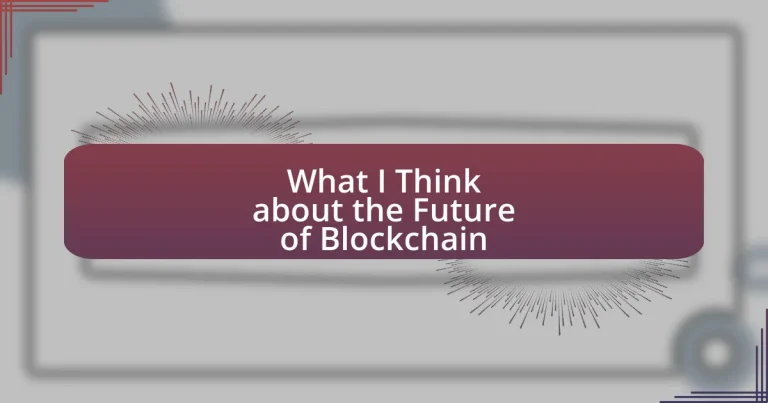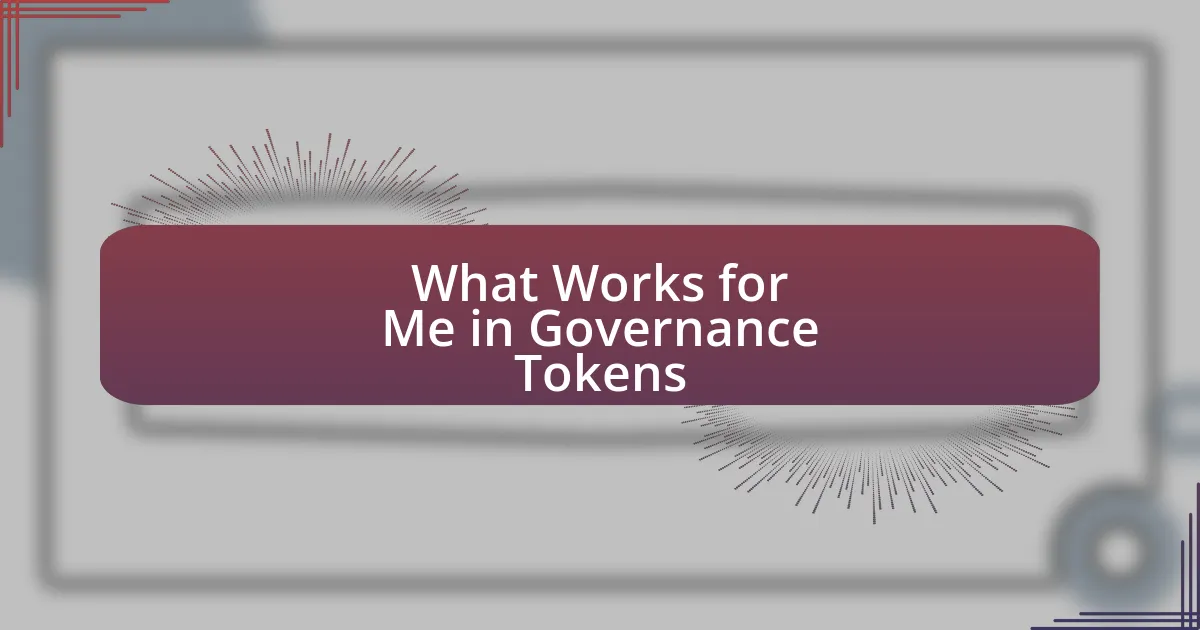Key takeaways:
- Blockchain enables decentralized and transparent transactions, reducing the need for intermediaries.
- Current trends include the rise of NFTs, enhanced supply chain management, and the integration of blockchain with AI.
- Key challenges for blockchain adoption include scalability, regulatory uncertainty, and user education.
- Future innovations may focus on layer-two solutions, AI integration, and secure blockchain-based identity verification.
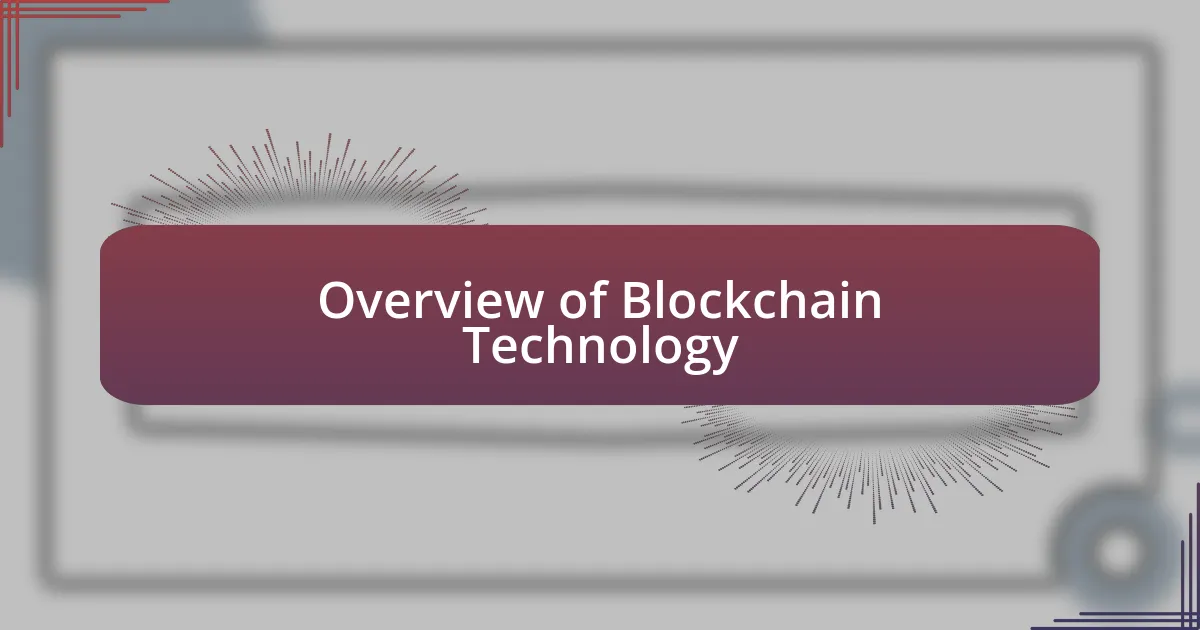
Overview of Blockchain Technology
Blockchain technology fundamentally reshapes how we process and verify transactions. I remember the first time I came across Bitcoin; it felt like a glimpse into a future where trust could exist without a central authority. This decentralization eliminates the need for intermediaries, allowing for safer and more efficient exchanges.
At its core, blockchain is a distributed ledger, meaning that all participants in the network have access to the same records. Have you ever wondered how this transparency could transform industries beyond finance? I’ve often reflected on its potential applications in supply chain management, where tracking the journey of goods could enhance accountability and reduce fraud.
Smart contracts represent another fascinating layer of blockchain technology. They automatically execute agreements when pre-defined conditions are met, simplifying processes and reducing human error. Can you imagine a world where contracts execute instantly? In my experience, the implications of this could revolutionize everything from real estate transactions to healthcare, making processes faster and more trustworthy.
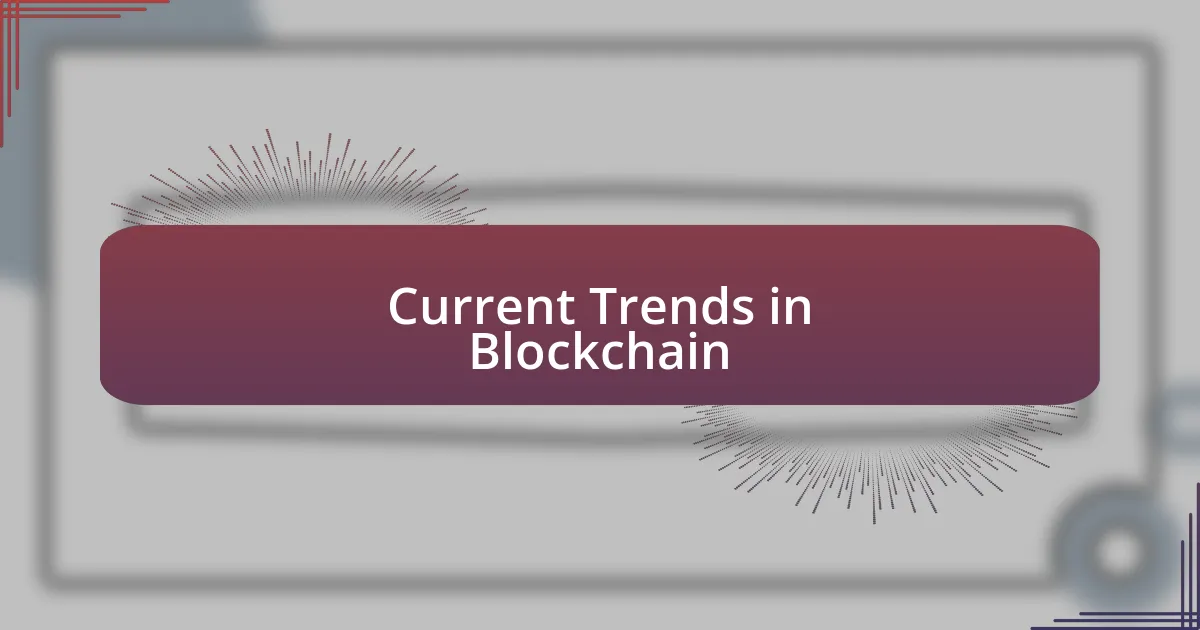
Current Trends in Blockchain
Current trends in blockchain are shaping the way we think about technology and its applications. One significant trend I’ve observed is the rise of non-fungible tokens (NFTs). Initially, I was skeptical about their value, but seeing artists and creators reclaim ownership and monetize their work in new ways has truly changed my perspective. The innovative ways people are leveraging NFTs to represent ownership of digital assets is a real game changer.
Another trend that stands out is the increasing adoption of blockchain in supply chain management. I’ve had conversations with small business owners who are excited about using blockchain for tracking products from manufacturer to retail. It’s thrilling to witness how the authenticity and traceability provided by blockchain can empower businesses and consumers alike, reinforcing trust in the products we purchase.
Lastly, the integration of blockchain with emerging technologies like artificial intelligence (AI) is gaining momentum. I recall a discussion I had about how AI could analyze blockchain data for predictive analytics. This synergy could lead to smarter decision-making across various sectors, enhancing our capabilities and opening new avenues for innovation. Seeing these technologies come together feels like being on the brink of a technological renaissance.
| Trend | Description |
|---|---|
| Non-Fungible Tokens (NFTs) | Unique digital assets gaining popularity for ownership representation. |
| Supply Chain Management | Enhancing tracking and authenticity of products to build consumer trust. |
| Integration with AI | Combining blockchain with AI for improved data analysis and insights. |
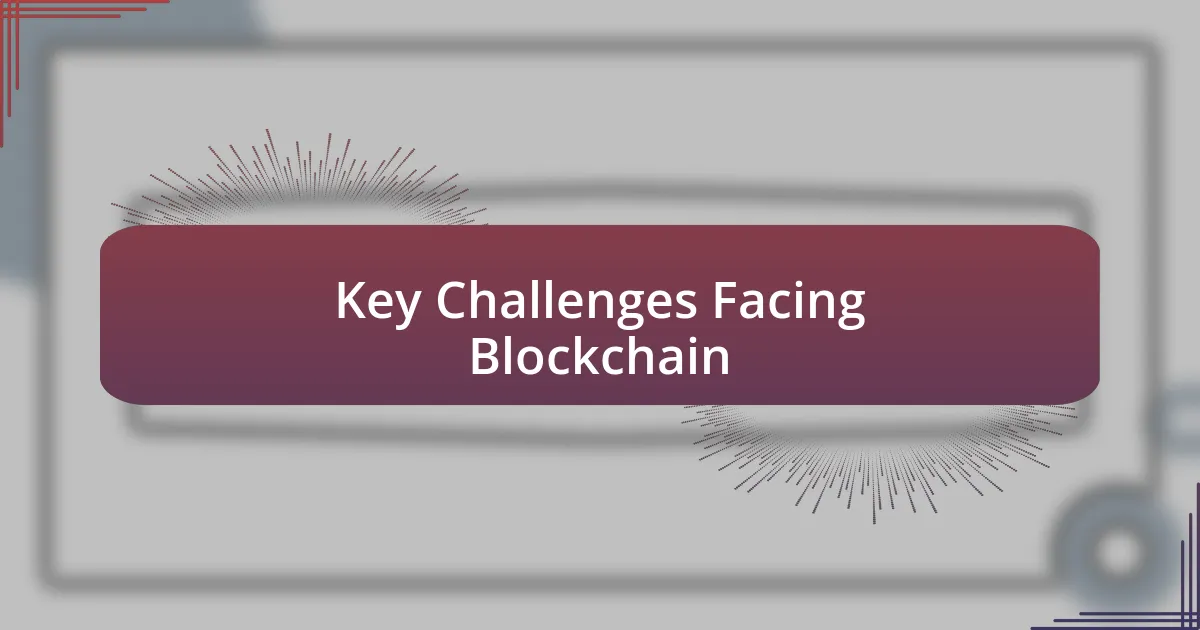
Key Challenges Facing Blockchain
Key Challenges Facing Blockchain
While the potential of blockchain is immense, I’ve noticed several key challenges that stand in the way of its widespread adoption. One major issue is scalability. I’ve spoken with developers who express frustration over transaction speed and capacity, especially when comparing blockchain solutions to traditional systems. As the demand grows, the ability of networks to process large volumes of transactions efficiently is crucial for success.
Furthermore, regulatory concerns pose a significant hurdle. Many companies are hesitant to fully embrace blockchain due to the uncertainty surrounding compliance with laws and regulations. This shadow of doubt can stifle innovation and slow down progress.
- Scalability: Current blockchain systems struggle to handle the increasing volume of transactions without sacrificing speed.
- Regulatory Uncertainty: Lack of clear regulations creates fear and hesitation for businesses considering blockchain adoption.
- User Education: There is a prevalent knowledge gap among potential users, leading to misunderstandings about blockchain’s capabilities and risks.
- Interoperability Issues: Different blockchain systems often do not communicate well with each other, creating fragmentation in the ecosystem.
- Energy Consumption: The environmental impact of blockchain, particularly proof-of-work mechanisms, raises sustainability concerns that need addressing.
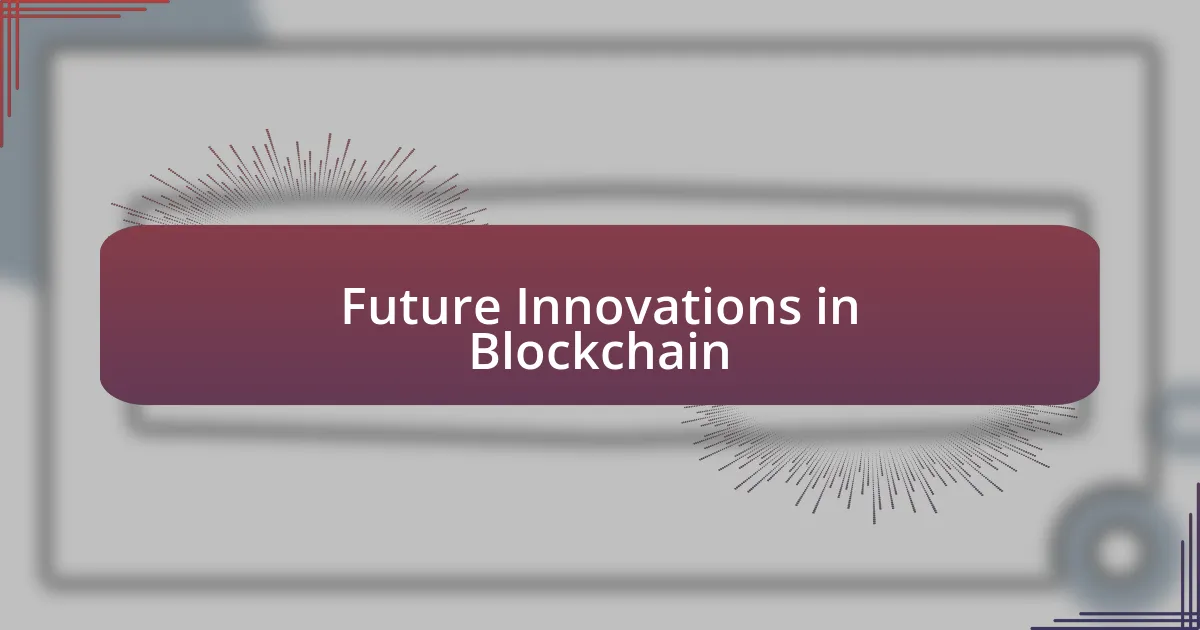
Future Innovations in Blockchain
Future Innovations in Blockchain
I believe that one of the most exciting innovations on the horizon for blockchain is the rise of layer-two solutions. Many developers are already experimenting with these off-chain protocols, which aim to enhance scalability without compromising security. Personally, I find it fascinating how these technologies could unlock new possibilities for decentralized finance (DeFi) and other applications by increasing transaction speeds significantly.
Another area I see blossoming is the integration of blockchain with artificial intelligence (AI). Imagine the potential when AI algorithms can securely analyze huge datasets on a blockchain—enhancing everything from supply chain management to personalized medicine. This convergence could create smarter systems that not only respond in real-time but also predict trends and needs vividly, revolutionizing our daily operations in ways we can hardly envision.
Furthermore, the idea of blockchain-based identity verification is an innovation I think has tremendous implications for user privacy. In our increasingly digital world, a secure, decentralized form of identity management could empower individuals by giving them greater control over their personal data. Doesn’t it excite you to think about a future where your identity remains secure yet accessible only to you, eliminating the risks tied to data breaches? I firmly believe that developments like these could lead to a more secure and transparent society.
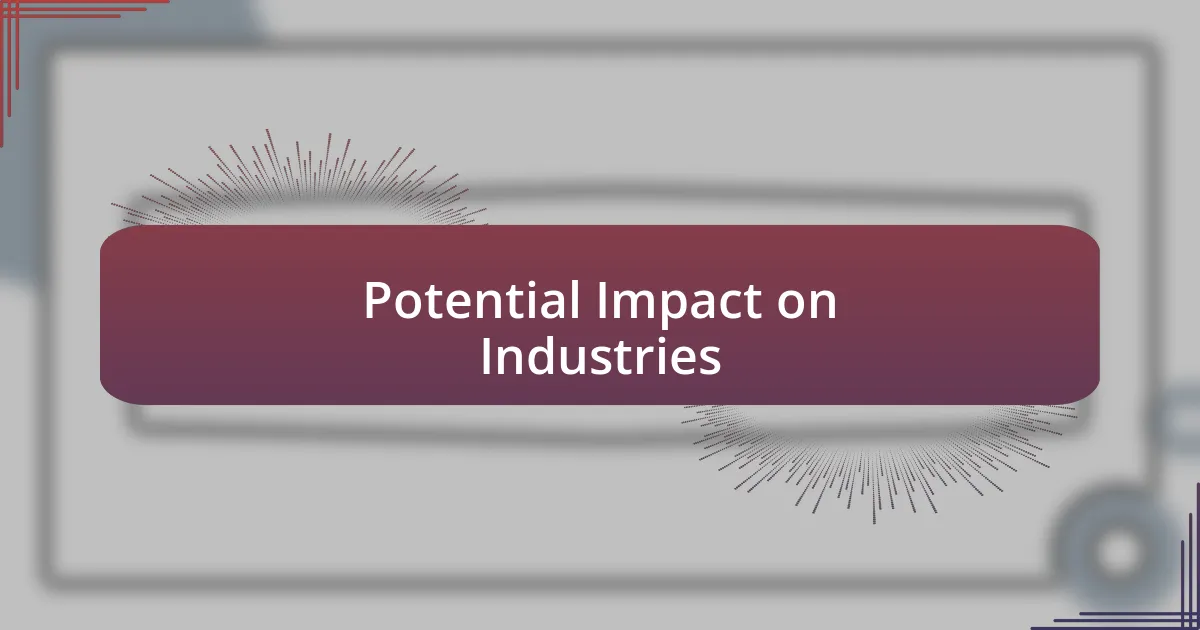
Potential Impact on Industries
The potential impact of blockchain on the supply chain industry is something I find particularly compelling. I’ve seen firsthand how transparency can transform operations—imagine a world where every transaction is recorded on a public ledger. This not only enhances trust among partners but also enables consumers to trace the origin of products, fostering an environment of accountability that can positively influence purchasing decisions.
Another industry ripe for disruption is healthcare. Picture a scenario where patient records are securely stored on a blockchain, accessible only to authorized personnel. From my perspective, this could lead to faster treatment decisions and improved patient outcomes. It raises a thought-provoking question: how much more effective could our healthcare systems become if they were truly patient-centered and data-driven?
The financial services sector is on the brink of a major upheaval as blockchain technology redefines transactions. Just consider how blockchain can reduce the need for intermediaries, ultimately decreasing costs and speeding up processes. It’s fascinating to think how this shift might empower smaller businesses, allowing them to operate on a level playing field with industry giants. What does that mean for innovation and competition? In my view, it invites a wave of creativity that could reshape the economic landscape in ways we’ve yet to fully grasp.
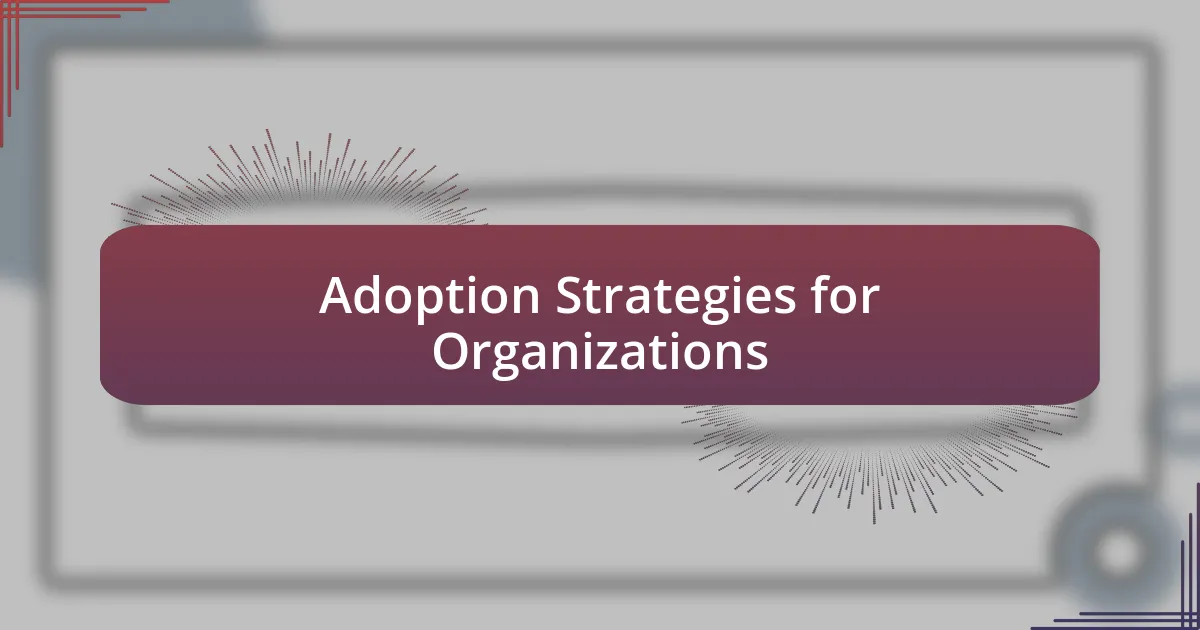
Adoption Strategies for Organizations
Organizations looking to adopt blockchain need a clear strategy that balances innovation with practicality. I recall a company I consulted for that launched a pilot program, which allowed them to experiment without a full commitment. It was a smart way to gauge the benefits and complexities while still managing risk. Have you ever considered how such small-scale experiments can provide invaluable insights?
Training staff is another crucial element in the adoption process. When I worked with a tech firm, we saw substantial improvements in operational efficiency after investing in blockchain education for employees. It’s fascinating to see how a well-informed team can identify potential use cases that executives might overlook. Have you thought about how much the right training could empower your workforce?
Lastly, building partnerships with established blockchain platforms can streamline the transition. In my experience, collaborating with organizations that have already navigated the complexities of blockchain can provide valuable lessons and accelerate your own journey. It’s like having a mentor during a challenging climb—don’t you think that kind of support is essential for success in a rapidly evolving space?

